Timber Stains
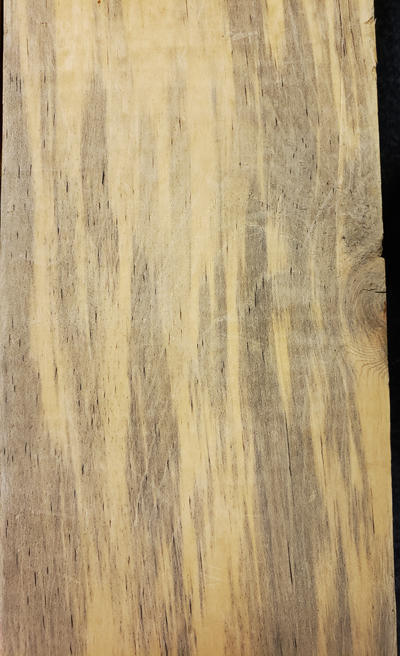
Blue Stain in pine board. The coloration in wood is due to the pigment in the fungal hypae.
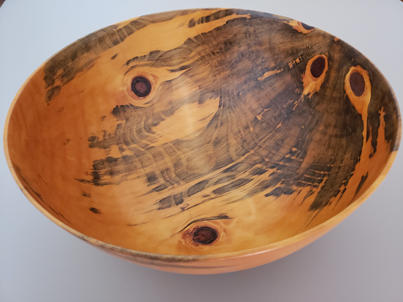
Bowl made from blue stained pine wood. Stained wood with this dramatic blue coloration can be used to make interesting wooden items and art work.
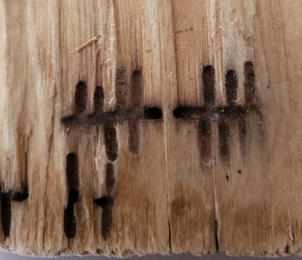
Insects vector blue stain fungi. Above are tunnels of ambrosia beetles in wood. These beetles carry specific stain fungi and introduce them into the wood. The larvae eat the fungus while maturing in the wood.
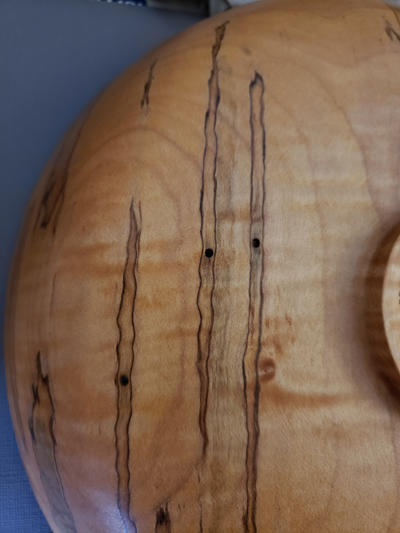
Ambrosia beetle tunnels and blue stain fungi in maple.
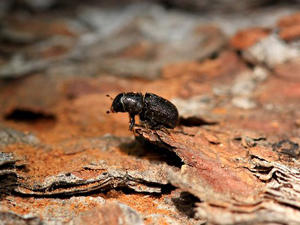
Bark beetles also vector blue stain fungi such as this mountain pine beetle.
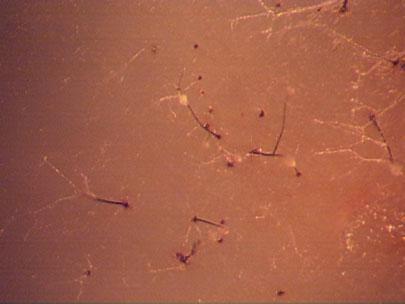
Synnemata produced by a blue stain fungus as seen with a hand lens.
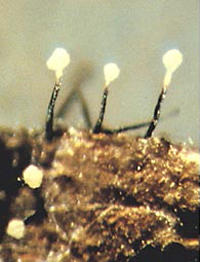
Many blue stain fungi such as species of Ophiostoma produce synnemata. These asexual structures have sticky spores that are moved around by insects.
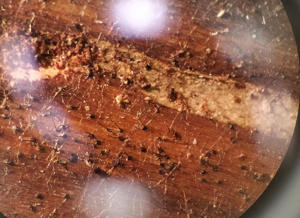
Perithecia produced by a blue stain fungus on pine wood. Note bulbous base at each perithecium.
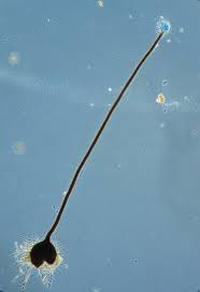
A perithecium with a very long neck. Asci open inside the perithecium and ascospores ooze out of the ostiole at the tip of the neck in a sticky matrix.
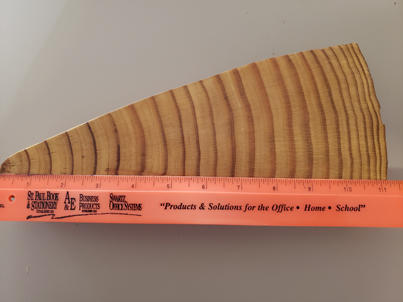
Since blue stain fungi only colonizes the sapwood, fast growing trees like this radiata pine grown in New Zealand can be very susceptible to stain. This tree was 2 feet in diameter and only about 24 years old. If stain fungi colonized this wood, all of it would be stained.
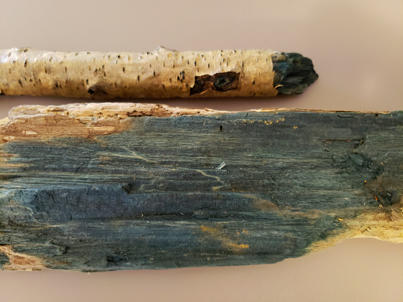
Samples that are dry of green stain (or blue/green) in aspen and birch caused by Chlorociboria.
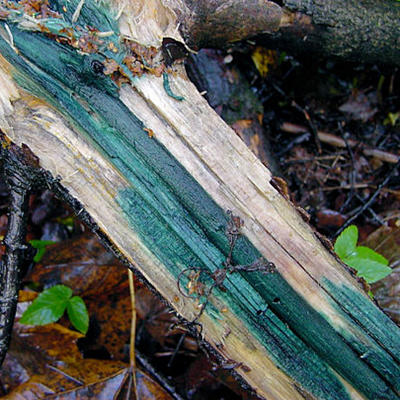
When found in the field, the stain can be bright green.
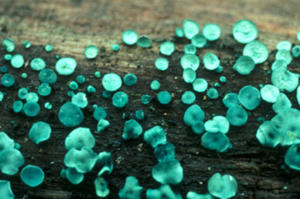
Chlorociboria produces blue/green apothecia on wood. These small cup-like fruiting bodies produce asci and ascospores.
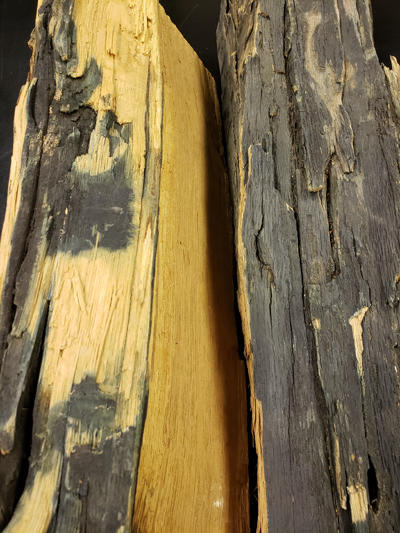
Another type of stain that is dark greenish black is not caused by a fungus but a reaction of iron to the tannins in oak, cherry and other woods that have a high tannin content in their heartwood. This is called iron-tannic stain.
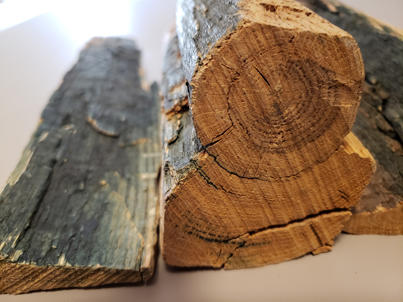
Iron tannic stain occurs in cracks in trees and surfaces that react with iron (carried in with water) are stained. The stain does not diffuse deep into the wood adjacent to the cracks.
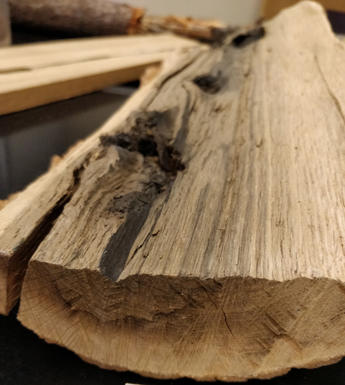
A black stain in oak wood caused by iron. This tree had barbed wire attached to it and the tree grew around it. This also happens when nails are in trees. Oak and other trees with tannins in their heartwood react when iron is present. The stain may extend far from the actual iron wire or nail.
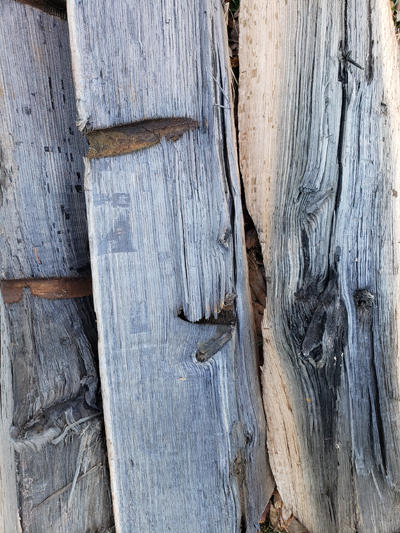
Split sections of oak pilings used for a dock. Iron fasteners were used and the iron caused very dark iron-tannic staining throughout the inside of the oak wood. The rust colored holes are where the fasteners were located.
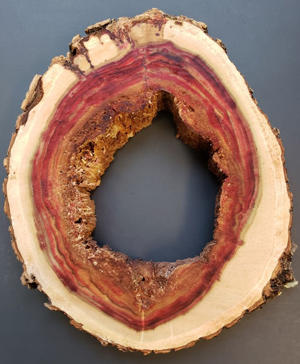
Red stain in box elder. This stain is produced by the tree as a host response.
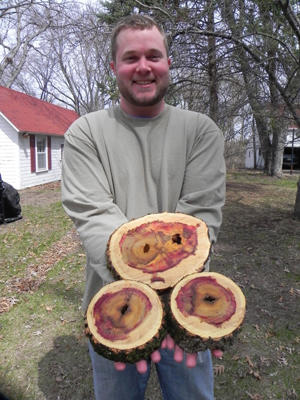
People are often amazed to find red stain when they cut up box elder with its vivid extraordinary color.
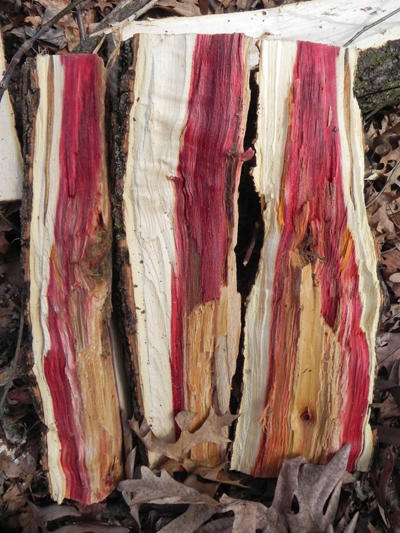
Split box elder wood with red stain is even more striking with its bright red coloration.
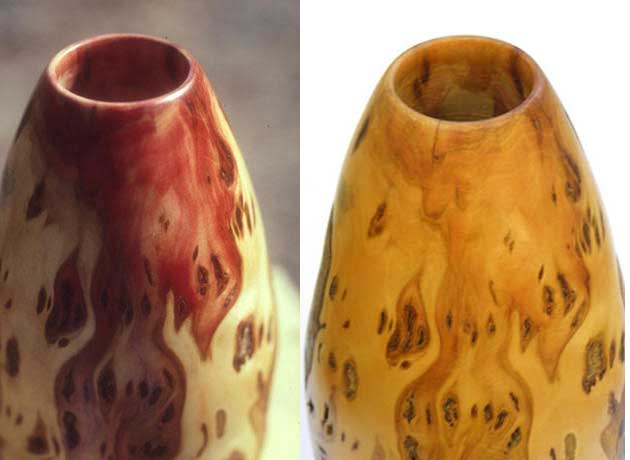
Wood workers use the red stained wood to make interesting objects but beware the red compound is not stable and breaks down in light - as you can see above with a change from red to brown in this vase after about 6 months out in normal room lighting.
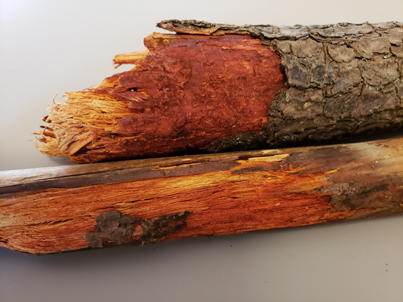
A different red stain (a dark blood red) occurs in pine wood. This is caused by fungal pigments produced by a decay fungus Phanerochaete sanguinea.